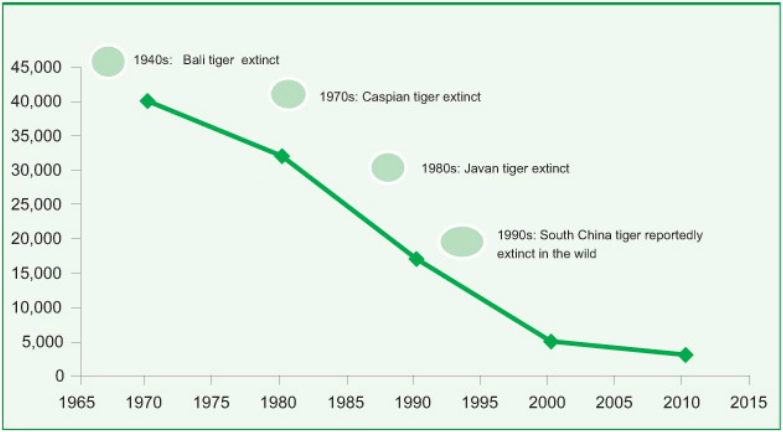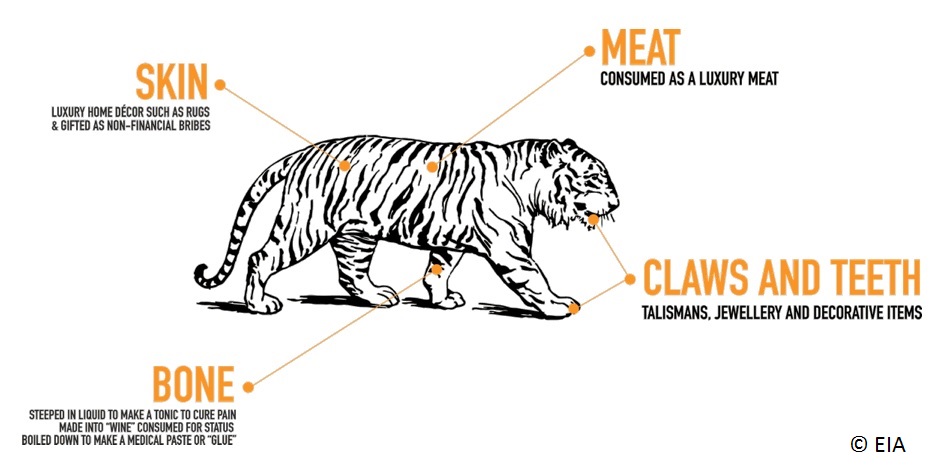INTERNATIONAL TIGERS DAY
Global Tiger Day, often called International Tiger Day, is an annual celebration to raise awareness for tiger conservation, held annually on 29 July. It was created in 2010 at the Saint Petersburg Tiger Summit in Russia.
The goal of the day is to promote a global system for protecting the natural habitats of tigers and to raise public awareness and support for tiger conservation issues. International Tiger Day has been shown to be effective in increasing online awareness on tigers through information search

* HISTORY OF TIGER'S DAY
-
International Tiger Day raises awareness about the need for tiger conservation and the threats they face. From date to history, here's all you need to know.
- International Tiger Day is a global initiative focused on protecting the natural habitats of tigers and raising public awareness about their conservation. This day plays a crucial role in increasing online engagement and interest in tiger-related information.
- Tigers, some of the most majestic creatures in the animal kingdom, include species such as the white tiger, Royal Bengal tiger, and Siberian tiger, each ruling their respective habitats with pride and elegance.
- However, these magnificent animals face numerous threats, including climate change, illegal wildlife trade, and habitat loss, which have led to a rapid decline in their population. The day serves as a reminder of the urgent need to address these issues and take action to ensure the survival of these iconic big cats.
* DIFFERENT SPECIES OF TIGER

- A GOLDEN TIGER : sometimes called a golden tabby tiger, is a Bengal tiger with a colour variation caused by a recessive gene. Like White tigers and Black tigers, it is a colour form and not a separate subspecies. Known for its blonde or pale-golden color and red-brown (not black) stripes, the golden tiger colouring comes from a recessive trait referred to as "wideband" which affects the production of black during the hair growth cycle
- THE WHITE TIGER or bleached tiger : is a leucistic pigmentation variant of the tiger. It is reported in the wild from time to time in the Indian states of Madhya Pradesh, Assam, West Bengal, Bihar, Odisha, in the Sunderbans region and especially in the former State of Rewa.
- BENGAL TIGER : The tiger is the largest of all the big cat species. With its stripy orange coat and long, striped tail, tigers are very recognisable. An adult Bengal Tiger can be up to 3 metres long, tail included, and weigh more than 250 kilograms.
- SIBERIAN TIGER/B>The Siberian tiger or Amur tiger is a population of the tiger subspecies Panthera tigris tigris native to the Russian Far East, Northeast China[1] and possibly North Korea.[2] It once ranged throughout the Korean Peninsula, but currently inhabits mainly the Sikhote-Alin mountain region in southwest Primorye Province in the Russian Far East. In 2005, there were 331–393 adult and subadult Siberian tigers in this region, with a breeding adult population of about 250 individuals.
THE SOUTH CHINA TIGERis a population of the Panthera tigris tigris subspecies that is native to southern China.[2] The population mainly inhabited the Fujian, Guangdong, Hunan and Jiangxi provinces. It has been listed as Critically Endangered on the China's Red List of Vertebrates[3] and is possibly extinct in the wild since no wild individual has been recorded since the late 1980s.[4] In the late 1990s, continued survival was considered unlikely because of low prey density, widespread habitat degradation and fragmentation, and other environmental issues in China.[5] In the fur trade, it used to be called Amoy tiger
POPULATION OF TIGERS IN INDIA

In 2018, according to the National Tiger Conservation Authority, there were an estimated 2,967 wild tigers in existence in India. The wild tiger population increased to 3,682 as of 2022.
As India is home to the majority of the global wild tiger population, the increase in the population of tigers in India played a major role in driving up global populations as well; the number of wild tigers globally rose from 3,159 in 2010 to 3,890 in 2016 according to World Wildlife Fund and Global Tiger Forum.
Tiger reserves were set up as a part of Project Tiger initiated in 1973 and are administered by the National Tiger Conservation Authority of Government of India.
TIGER SANTUARIES IN INDIA
POACHING DETAILS IN GLOBAL


-
* During 2000 and 2022 a staggering 3,377 tigers were seized from traffickers from over 50 countries. This data reveals only the tip of the iceberg, as due to the nature of illegal crimes many
of them go undetected. so we can only imagine the actual number of tigers traded during this time is much, much higher.
* In 1975 the Convention on International Trade in Endangered Species of Wild Fauna and Flora (CITES) first agreed it should be illegal to trade tigers, their parts or products, internationally for money yet decades later the industry remains one of the greatest threats to wild tiger populations
-
* Sourcing tigers for the trade
It often starts out with poachers setting snares in tiger habitat, but snares can’t pick and choose what they trap and anything could get caught including tigers, their prey or other wildlife. One thing is for sure whatever is trapped, unless rescued, will die a painful and often slow death.
Sansar Chand, the notorious Tiger poacher acknowledged to selling 470 tiger skins and 2,130 leopard skins to just four clients from Nepal and Tibet.
back to top





